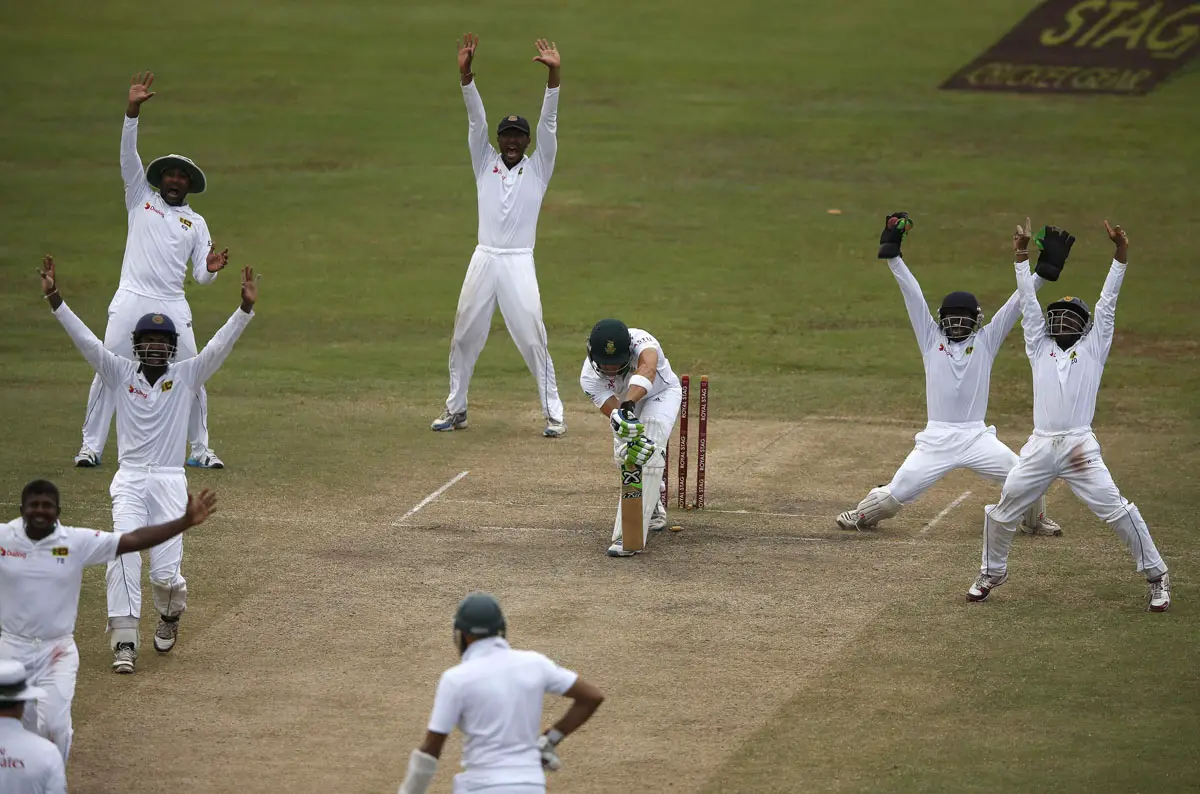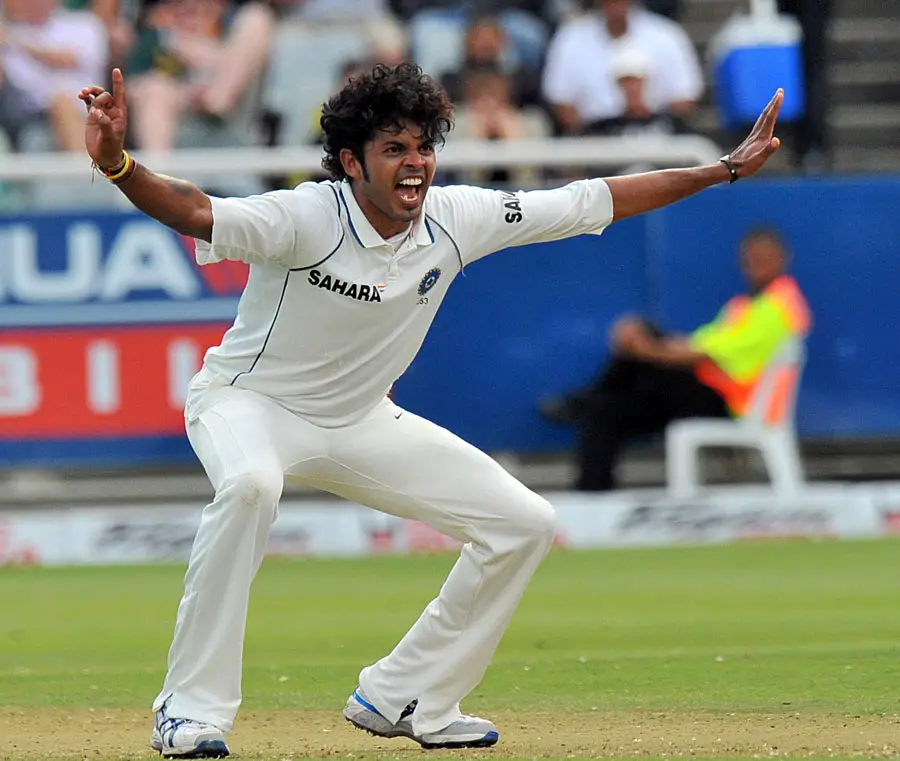The game of cricket has some great traditions. One such tradition is the manner in which a player can appeal! You may often see players calling out “Howzat”, sometimes as loudly as they can! But, have you ever wondered why do cricketers should Howzat? What does it even mean?
Cricketers shout Howzat in order to appeal for a dismissal of a batsman. The word Howzat is an abbreviated form of “How’s that”, which is considered as a way of asking an umpire whether a batsman is out or not. Without an appeal, an umpire can not give a batsman out even though he may actually be out!
On that short premise, let us try to understand, in detail, what are the factors involved when the players shout “Howzat”.
What does “Howzat” literally mean?
“Howzat” is literally a distorted version of the phrase “How’s That?”. It’s an abbreviation that has been historically used to pose the questions to the umpires since the very beginning of the cricket. It is not the only way in which the appeal can be made though. There are many different methods and no single method is considered to be the only legal way.
As long as the decency is maintained on the field, it could just be an animated “how”, just an elongated “zaattt” with hands up the air or just about anything else that is blurted out or gesticulated, to suggest to the umpire that a decision has been asked for.

Often in case of a Run Out or a Stumping, when an appeal is almost guaranteed, the umpires do wait for the fielding team to appeal before calling for a third umpire’s slow-motion review.
What is an appeal? Can umpires give a batsman out without it?
An appeal is when the fielding side asks, by words such as “howzat” or by actions such as raised hand or a pointing finger, to the umpire for a decision whether a batsman is ‘out’ or ‘not’ based on the activities that happened on the latest delivery.
MCC’s Law 31 clearly states that the batsman must not be given out unless appealed by the fielding side. If the fielding team does not appeal for, say a tight caught-behind dismissal, and the batsman does not walk despite knowing very well that he has nicked it, the umpire is under no obligation to raise the finger. Whether the umpire is aware that the batsman has edged it to the keeper is completely irrelevant in this case.
That is why players across the world tend to over appeal for near misses, and also when there is clear daylight between bat and ball. There is nothing to lose for a turned down appeal but a lot to lose if the appeal was not made and the batsman was, in fact, out.
What is the concept of “walking” in Cricket?
On one hand, there are the laws of the game, and on the other, are the unwritten rules of this game of gentlemen where at all times you are expected to fair to your opponents.
The concept of “walking” is when a batsman walks back to the pavilion, without officially given out by the umpire in the absence appeal from the opposition, knowing that he/she is actually out. The batsman knows very well that if stayed put, he/she may get to bat further but chooses to ‘walk’ anyway.
In the presence of Review System, the players don’t generally ‘walk’ that these days. More on that later.
What is the time limit for an appeal?
This is the trickiest part of an otherwise easy to understand law about appeals in cricket.
The law states that the appeal for the previous ball can be made until the bowler starts the run-up for the next delivery. If the bowler has no run-up, then the appeal can be made until the bowler gets into the bowling action.
Well, then what about the case when the previous ball was the last ball of the over? In that case, the appeal can be made until the next bowler starts the run-up or gets into the bowling action in case of no run-up. If after all this the umpire thinks that the batsman is ‘out’ then he is supposed to raise the finger.
The Call of Over does not invalidate an appeal but Call of Time does. The time is generally called at the end of the session or an innings.
Which appeals does the umpire at each end answer to?
“Howzat”, and such similar appeals, covers all types of dismissals. Although you will often see players rightly asking the umpire at the correct end, the players are not required to direct the appeal to the umpire responsible to give the decision for a specific type of dismissal.
Putting it another way, it is the responsibility of the umpires to answer to the appeals on the matters under his/her jurisdiction. Except for “Hit Wicket”, “Stumped” and “Run Out” when occurs at striker’s end, all other types of dismissals fall under the jurisdiction of the bowler’s end umpire.
This is not to say that the umpires cannot consult each other before the decision is made. It is in-fact considered good practice to consult your fellow umpire in case of slightest of confusion. The on-field umpires generally consult each other for catches occurring from the cross-batted shots such as pull or hook, or the cases when there is doubt that a catch has been taken cleanly or not. They may choose to seek help from the third umpire if both the on-field umpires are not convinced either way.
What is unethical appealing in cricket?

Under the ICC Cricket Code of conduct, an unethical or unsportsmanlike appeal is when the players from the fielding side appeal excessively, the appeal is made to intimidate the umpire or the batsman and/or despite knowing very well that the batsman is not out.
In the limited overs cricket, it has also been observed that the unnecessary cries of “Howzat” are also employed, successfully at times, to divert umpire’s attention from declaring the ball a Wide-Ball, especially on the leg side.
The practice of appealing has been seen to be exaggerated in the case of LBW (Leg Before Wicket). The players go up every time the ball hits the pads. Many times, knowing clearly that the batsman has hit the ball or was struck way outside the line of the off-stump and/or the ball was clearly going over the stumps given the bounce in the pitch. Yet they persist in appealing for that sliver of luck.
If the on-field umpires see such instances happening, they are supposed to report them to the Match Referee who then assesses the situation and imposes financial or match bans as applicable.
Could an appeal be withdrawn?
Yes, there is a provision in the laws where an appeal can be withdrawn and the dismissed batsman can come back to bat again. For this to happen, the fielding team captain has to withdraw the appeal only after obtaining the consent from the concerned umpire.
One such incident happened when in a test match between India and England Indian captain MS Dhoni called back Ian Bell after a bizarre Run-Out at the stroke of Tea.
Using a DRS for a review of the Appeal
When the initial “Howzat” does not yield a positive response from the on-filed umpires, the fielding team now has the right to divert the appeal to the third umpire using Decision Review System (DRS). When invoked by the fielding captain using a “T” sign made by arms, the on-field umpire gestures to the third umpire for review.
Since the DRS reviews are limited, the batsmen have all the more reason not to ‘walk’ despite knowing that they are out. ‘Not walking’ has transformed from an unsportsmanlike behavior to a strategy and it is not looked down upon as it used to be.
Final Thoughts
Didn’t think such a simple concept of “Howzat” had so many aspects associated with it? Did you? I hope this article gives a complete picture of the significance of “Howzat” and the nuances of rules and behaviors around it.
The enthusiastic cry of “Howzat” is the most used method for appeals that are necessary to officiate on the fundamental currency in cricket i.e. Wicket. I’m sure it will be a different feeling the next time you utter the slang – “Howzat”.
Image Credit for Post Featured Image
